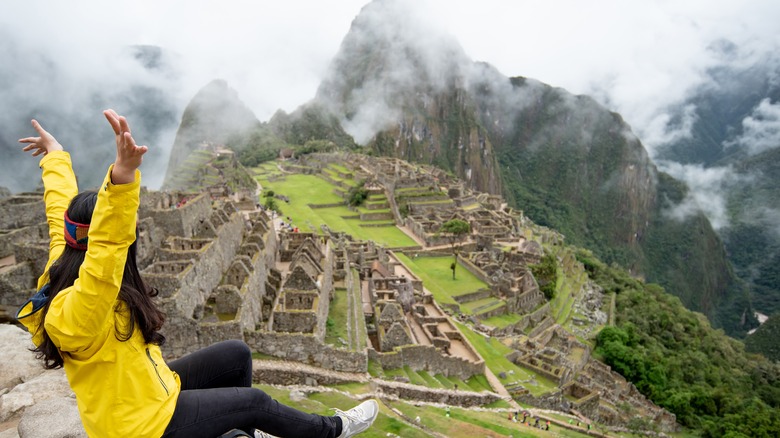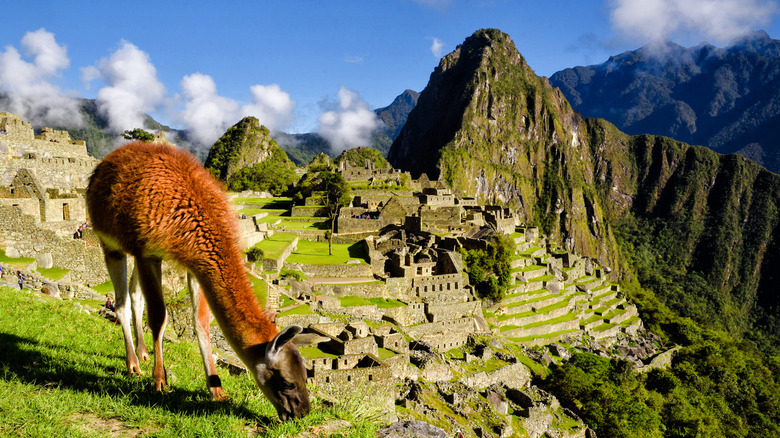Destinations Central and South America
Kristin Conard
Editor’s note: Machu Picchu has recently re-opened, as of February 2023, following several weeks of closure, but please confirm the site is open to tourists before making any plans.
Even if you’ve never been there, you probably recognize the iconic view of Machu Picchu, the 15th-century Inca citadel high in the mountains with its terraced stone structures amidst the verdant green jungle at the edge of the Amazon and the Andes. The mountaintop site with over 150 buildings is thought by archaeologists to have been either a sacred site or home to royalty, per History. Abandoned after the Spanish conquest of the Inca Empire in the 1500s, the site wasn’t discovered by the outside world until 1911 by archaeologist Hiram Bingham and his team. Bingham then wrote a book called “The Lost City of the Incas,” and people from around the world learned about this marvel of Incan civilization.
In 1983, Machu Picchu, which means “Old Mountain” in the Quechua language (per World Wildlife Fund), was named one of UNESCO’s World Heritage sites. Then in 2007, with votes from around the world, Machu Picchu was named one of the New 7 Wonders of the World. There are a number of different ways to get to Machu Picchu, one of which is the popular Inca Trail hike. If you’re planning the absolute bucket list experience of a hike on the Inca Trail to Machu Picchu, here’s how to figure out the best time for you to go.
Consider a shoulder season trip to avoid crowds and higher prices

Zephyr_p/Shutterstock
June to August is in the middle of the dry season and visitors can expect sunny days and not much fog, making it the ideal time to hike the Inca Trail to Machu Picchu, per Mountain IQ. However, something to keep in mind is that the good weather naturally means it’s also one of the busiest times of year for the Inca Trail. Plus, the route that hikers take to Machu Picchu is limited to 500 people per day by permit, which includes workers such as guides and porters, according to Machu Picchu Terra. So make sure to book in advance.
Consider the shoulder season as an option to still get some pretty good weather but with fewer crowds, like May, which is towards the end of the rainy season that brings abundant wildflowers to the trail, per Mountain IQ. October is also a good time considering the warmer weather, and it’s also outside of the typical rainy season. Bonus! Since it’s not the busy season, there are likely to be more bargains with outfitters.
If you’re going in the rainy season, be prepared

SC Image/Shutterstock
That’s not to say that it’s impossible to hike the Inca Trail in the rainy season, running from around November through March. But remember that nothing is predictable with the weather, so you could get rained on in October and April; it’s not like there’s a hard cut-off for rain. Benefits of hiking during the rainy season are fewer crowds and an especially green landscape, according to Inca Trail Peru. Make sure to bring plenty of warm layers and quality rain gear for the rainy season. Layers are a good plan for anyone on the Inca Trail really, considering the microclimates along the way.
The heaviest rains come between January and March, via Inca Trail Peru. The trail can be wet and muddy, so make sure you’ve got good shoes and trekking poles to help keep you steady, and expect heavy instead of gentle rain, via Mountain IQ. And if you’re looking to go on the classic Inca Trail hike in February, forget it. Each year in February, the trail is closed for maintenance to keep the trail in good shape to both preserve it and help keep it safe for hikers, per TreXperience. (Machu Picchu is still open year-round, however.)

